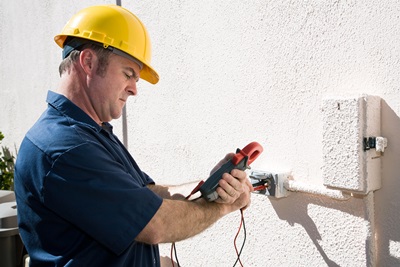How to get a Part P Certificate
For those who are new to the topic, the Part P certificate refers to a section of building regulations pertaining to matters of electrical safety. It is geared towards ensuring safety when it comes to domestic electric safety. In that sense, electricians should strive to attain the Part P certificate to evidence their skill and expertise in their professional field.
What is a Part P Certificate
At its most basic level Part P says that anybody completing electrical installation work on a home needs to ensure the work is planned and installed to protect residents against fires and electric shocks.
Moreover, Part P states that certain types of work in the electrical sphere should be notified to the building authorities. After work is completed, the building control bodies can then go ahead and issue a Part P certificate to the owner of the home if it is ascertained that the work was done properly. The certificates get issued by a Part P Scheme that is tasked with this particular responsibility. Work must be done by a qualified Part P installer, and listed below are the key factors you’ll need to undertake to ensure that the Part P certificate is granted.
Table of Contents
-
- Domestic Installation Workshop
- Part P Legislation
- Part P Design
- Specification of Circuits
- Observing Safety Precautions
- Duration and Qualifications of the Part P Course
Domestic Installation Workshop
In any profession, experience is held in high esteem. In the same way, attaining a Part P certificate as an electrician is fundamentally about the exceptional delivery of services that set you apart in terms of safety and quality. Therefore, enrolling on a Part P Course will offer a lot in the way of honing your craft. This is usually run as a five day course, and forms part of a wider programme to see you certified as a domestic installer.
Part P Legislation
The law is indispensable to this course. Electricians need to be well versed in key legal perspective in order to ensure they perform their duties in a way that protects them and their clients. Building regulations are given much emphasis in the training. Training on observing health and safety is also done to equip each electrician on the best way to undertake their responsibilities safely. In addition to this, the legislation training imparts electricians with the necessary skills and knowledge in notifying the authorities of their work.
Part P Design
The design aspect is also given a slot in the course. In order to obtain a Part P certificate, the electrician should get familiar with knowledge on how to best approach circuit design for various types of installation. In the course, electricians are taught how to best locate the exact place an installation should take place within a property. Also, they learn more about earthing and bonding in order to prevent electric fires that may eventually cause damages.
Specification of Circuits
There are many different types of electrical circuits, designed for various purposes. In order to be sure of safety operations and therefore be fully ready for Part P certification, an electrician must also understand the workability of standard circuits, lighting circuits, cooker circuits and fused connection circuits.
Observing Safety Precautions
The course also provides information on how to observe safety regulations during the operations, so that no unnecessary damage or risked is cause. This goes a great length in reducing accidents.
Duration and Qualifications of the Part P Course
As previously stated, the course usually takes a period of five days, at which point you’d be eligible to go for Part P certification. After completing all examination and assessment processes, an electrician will attain the Part P certificate. At this point, you’ll be a fully Part P certified professional!

 same day delivery
same day delivery
 20,000+ stock, great deals!
20,000+ stock, great deals!
 Experienced staff on hand
Experienced staff on hand
